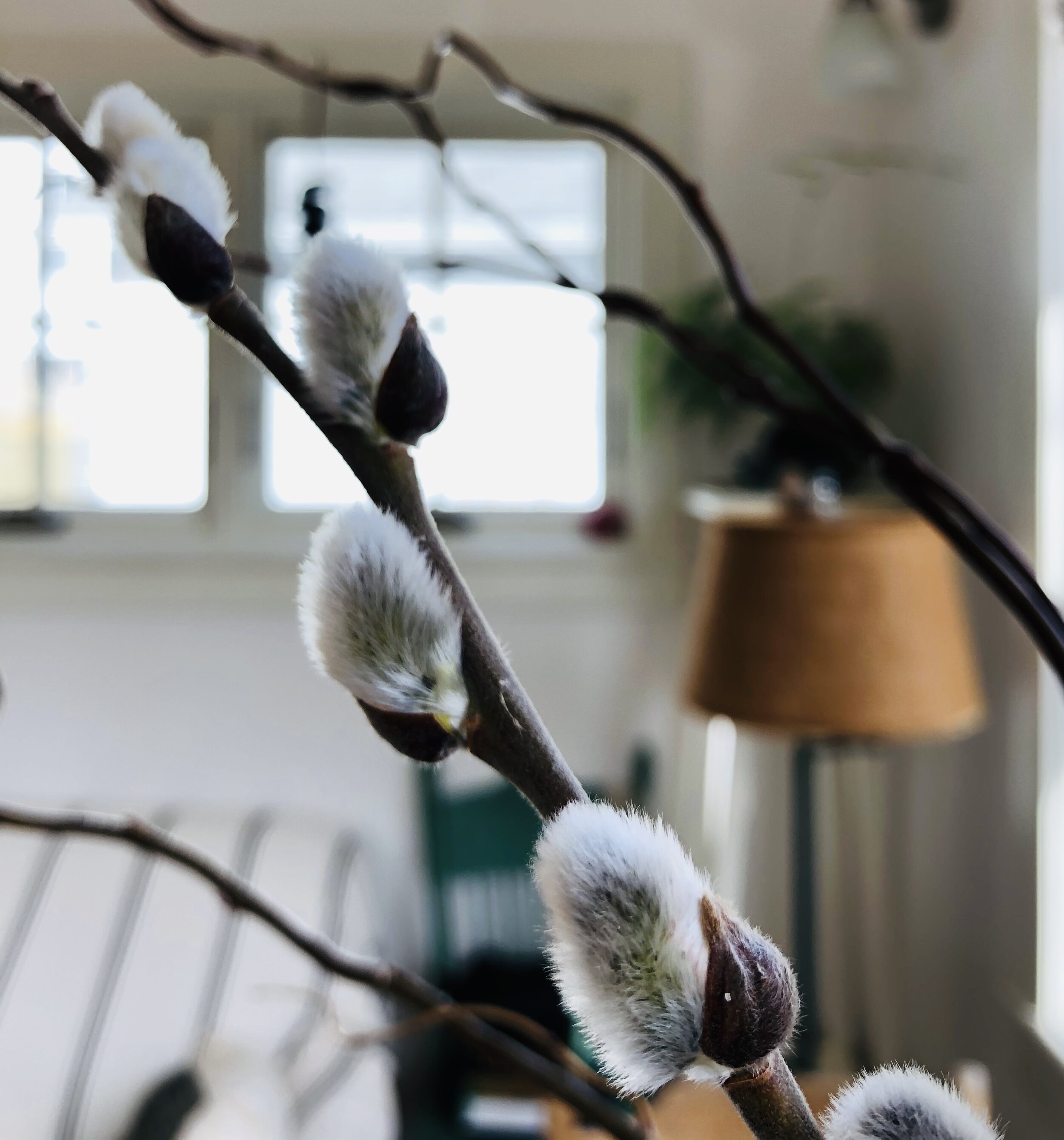The willows stopped me in my tracks as I was leaving the greenhouses on Friday. I was on my way home, and looked up just in time to see them just bursting with life, reminding me to pause and catch my breath. I had forgotten about spring. I snipped a few stems to bring home. There is a lot more there, and I welcome you to stop by and clip a stem or two for your own house. It feels good to share. Always having clippers in the car is a handy thing.
There are so many unknowns right now about what a small business like ours is supposed to do. I am a list maker, I love a well organized drawer, I own stacks of graph paper notebooks and I love logic. These are my coping mechanisms so our house has never been so clean, nor our weeks so organized as lately, but of course that does nothing for the looming unknowns.
Here are a few things we are doing at Red Wagon right now:
We are growing plants as if all the same gardens will grow that grew in years past. The plant world is not adjusting or stopping. I have heard from a few of you that you would like to know if you can plan your garden as usual, and yes, you can. That is one thing I feel secure about.
We are adjusting our calendar of events on a week by week, day by day basis. If you are signed up for a class or seminar, you will receive an email with updates. Video conferencing, very small in person groups with lots of distance, one on one consults on the phone, cancellations and full refunds are the options we are considering.
We plan to open on April 17th with normal retail hours. But of course, this might change as we get closer. That evening’s cocktail party will likely be postponed. Again, we will keep you updated.
We will offer home delivery of plants once the weather warms up. More details coming soon.
We will also offer pre-picked plant orders that can be paid for online or over the phone and picked up in the parking lot. .
We will continue to deliver plants to our wholesale partners as long as they are open.
As of now, we still hope to hold our April 4th Open House. Since this is a small group, dispersed amongst 4 greenhouses and the outdoors, it seems possible to provide some much needed activity in an airy and clean space full of growing plants. Again, we will adjust as needed as we get closer.
Our amazing crew is taking all of the precautions possible to work safely - more distance, more gloves, tons of hand washing. Because we are in large open spaces, this feels doable, and frankly there is no other place any of us would rather be outside of home. We are offering paid leave should anyone need it, and because of this, I am sending out this little plea: please continue to support small businesses in any way you can. We must rely on each other.
In the meantime, please send us your gardening questions and stories, share photos of your garden, engage with us on social media, and help your neighbors as best you can. In my more fantastical, utopian moments, I dream of us as a current day, virtual land army, with plants, flowers and home grown food helping us get through anything together.
With love,
Julie
P.S. At the top of the driveway, please check out all of Family Cow Farmstand’s offerings. Their store is well stocked with gorgeous local foods in addition to their stellar raw milk. The store is self-serve and open every day. And they will be raising chickens again - shares available for sale now. These are the most delicious chickens I have ever eaten, raised in the nicest way possible by two very smart and wonderful people.












